This post may contain affiliate links. Please read our disclosure policy.
These gluten-free scones are everything you want in a bakery-style treat—tall, flaky, and tender, with just the right crumb. I built this recipe on my master scone formula (the one I spent weeks perfecting!) and tested it specifically with King Arthur’s Gluten-Free Measure for Measure Flour. I even figured out how much extra flour to add depending on your mix-ins—so whether you’re adding blueberries, raspberries, lemon, cranberries or chocolate chips, you’ll get perfect scones every time.
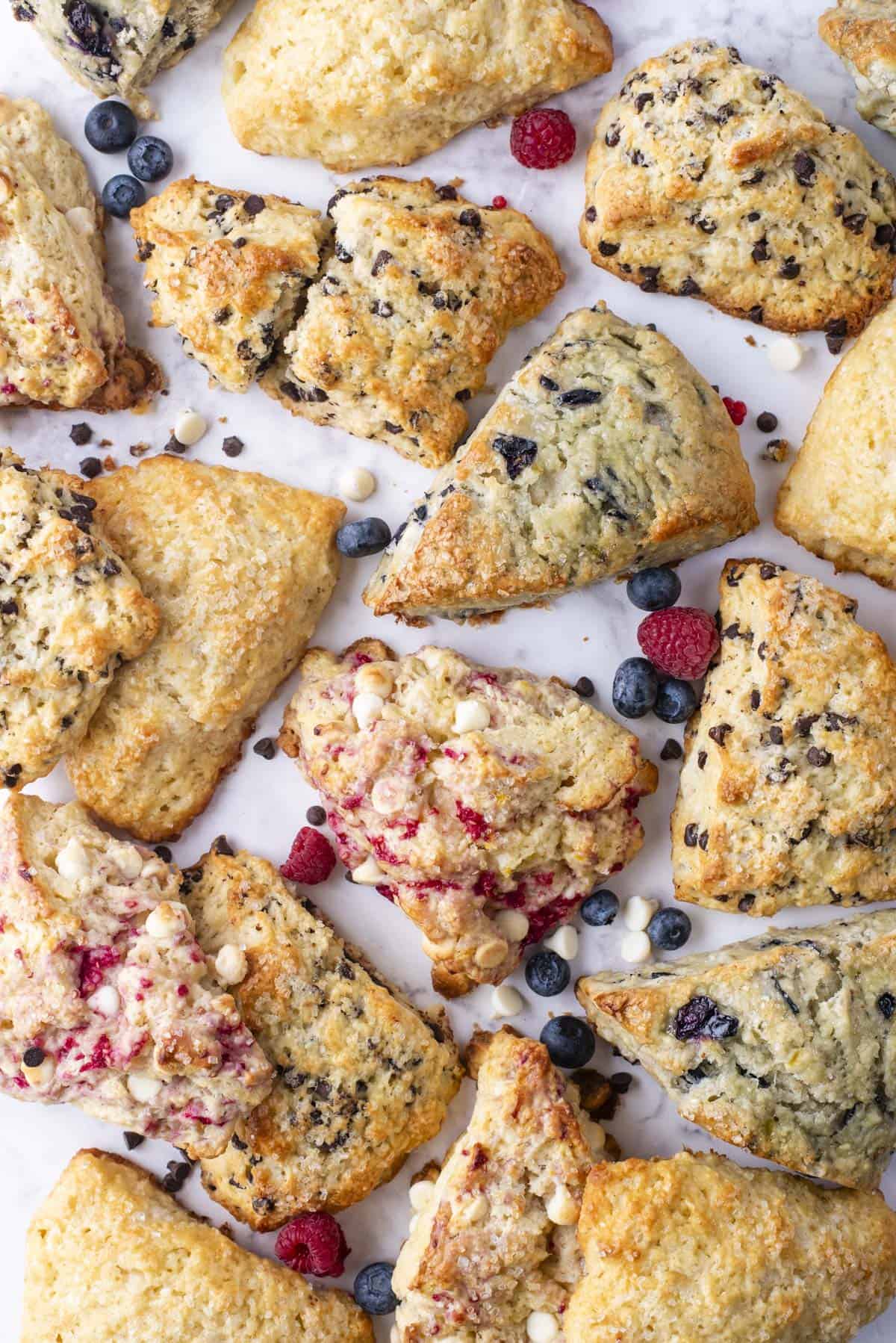
Why You Can Trust This Gluten Free Scones Recipe
This isn’t a quick gluten-free swap—it’s a fully tested, bakery-style scone recipe built on the foundation of my master scone recipe, the one I spent weeks developing and perfecting. I tested flour ratios, mix-ins, and butter techniques to help you create tall, flaky scones that taste like they came straight from a bakery—even without gluten.
Gluten-free baking comes with its own challenges: crumbly texture, dry edges, or dough that won’t hold together. That’s why I didn’t just substitute gluten-free flour and call it good—I tested this recipe specifically using King Arthur’s Gluten-Free Measure for Measure Flour, so you can count on results that actually work. The rise, the structure, the melt-in-your-mouth crumb? It’s all there.

I also tested how different add-ins—like juicy blueberries, raspberries, lemon juice, cranberries and chocolate chips—affect the dough, and figured out exactly how much extra flour to add depending on what you mix in. Because yes, mix-ins can totally throw off the texture if you don’t adjust—and now you don’t have to guess.
Whether you’re making classic vanilla scones or customizing with lemon poppyseed, almond glaze, or fresh fruit, this gluten-free scone recipe is designed to be your reliable go-to. With clear step-by-step instructions, tested adjustments, and tips to avoid flat or dry scones, this recipe takes out the guesswork and gives you bakery-style results—every single time.

Gluten Free Scone Ingredients
- Gluten-free Measure for Measure Flour: I use King Arthur’s Gluten-Free Measure for Measure Flour, using my kitchen scale to weigh it in grams.
- Baking powder: We use 1 whole Tbsp in my recipe for lots of lift.
- Unsalted butter: Butter is a key ingredient in scones for flavor and texture. Using small cubes of cold butter is key to creating the flakiness scones are known for.
- Buttermilk: This key ingredient adds moisture and acidity, which helps create a soft crumb and activates baking soda or baking powder for a better rise. It also tenderizes the dough without making it heavy. Buttermilk is the best milk to use overall for texture and rise.
- Add-ins: You can add whatever add-ins you want to this gluten free scones recipe. Just be sure to adjust the flour as directed in the recipe as needed for the type of add-ins you choose.

What if I don’t have buttermilk? What can I substitute?
If you’re out of buttermilk, you can easily make your own—just check out my simple DIY buttermilk guide. You can also swap in heavy whipping cream or sour cream thinned with a little water. Use the same quantity as the recipe calls for. I don’t suggest using whole milk, almond milk, or other dairy alternatives, as they won’t give the same results.
Can I use a different gluten-free flour?
This recipe was carefully developed using King Arthur’s Gluten-Free Measure for Measure Flour, which contains xanthan gum. If you choose a different brand, your results might differ based on the blend and whether it includes binding agents like xanthan gum. For the most reliable texture and structure, I suggest using King Arthur’s flour.

Gluten Free Scone Recipe Add-Ins
If you choose to add ingredients to flavor the scones, add a total of 1-1.5 cups of your chosen add-in. Read the tips below for more specifics on adjusting the flour ratio for different add-ins. Here are some add-in ideas:
- Chocolate chips: I used mini chocolate chips in the photos.
- White chocolate chips
- Fresh raspberries: broken into pieces and frozen
- Blueberries
- Strawberries: chopped
- Lemon: 1 Tbsp lemon zest and 1 Tbsp lemon juice
- Cranberry and Orange: 1 Tbsp orange zest, 1 Tbsp orange juice, and 1 cup fresh, frozen, or dried cranberries
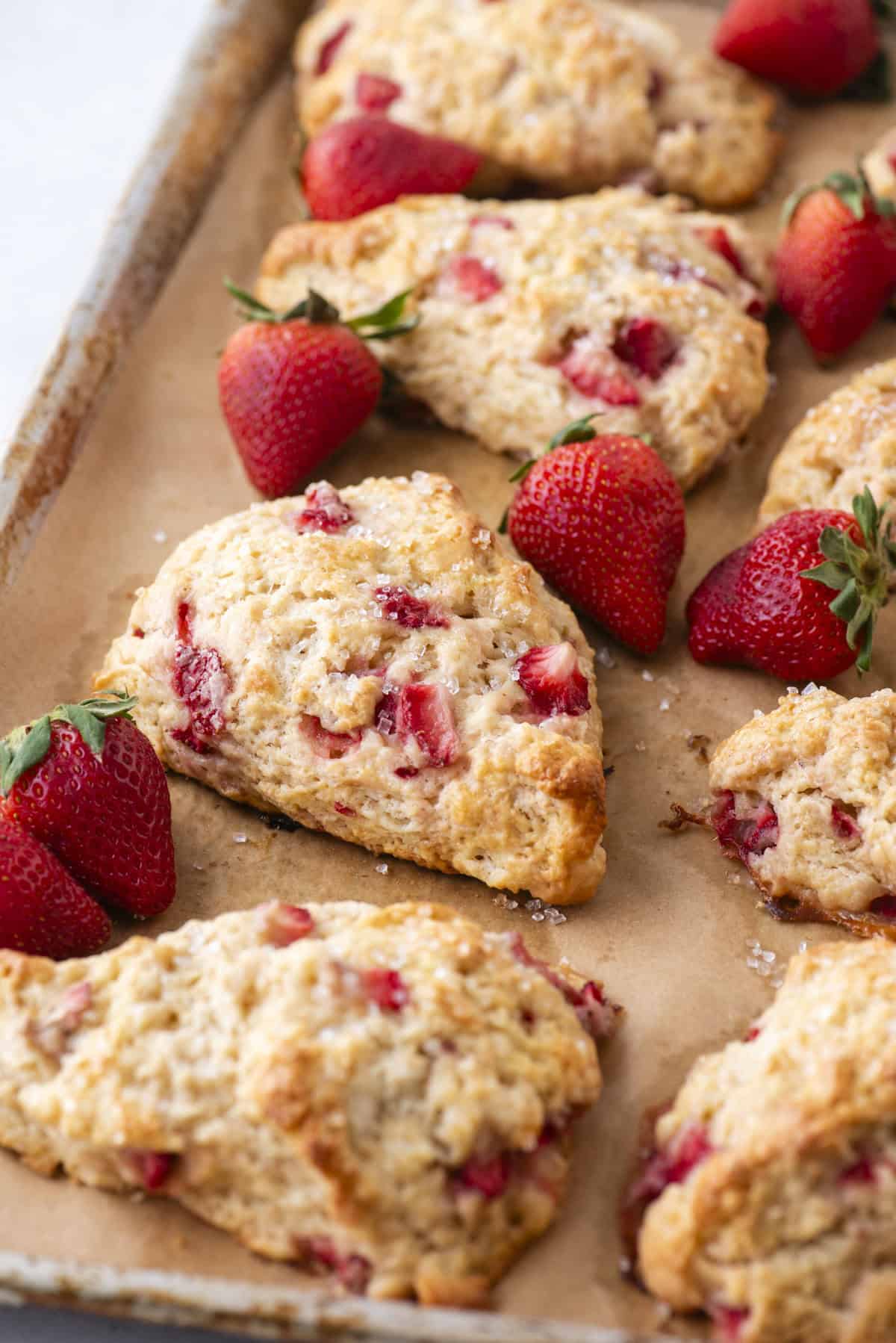
How to Make Gluten Free Scones
Your friends and family will be so impressed, they won’t know these are gluten-free or how easy they were to make! Follow my step-by-step instructions here (and in the recipe card below):
- Notes on flour ratio: If making plain or chocolate chip scones, use 2 ¼ cups gluten free flour (270g). If making raspberry scones add an additional ¾ cup gluten free flour (90g) for a total of 3 cups (360g). If making blueberry, strawberry, lemon, or cranberry orange scones add an additional ¼ cup gluten free flour (30g) for a total of 2 ½ cups (300g). The fresh fruit adds a lot of moisture so more flour is needed otherwise the dough will be very wet and not have enough structure when baking.

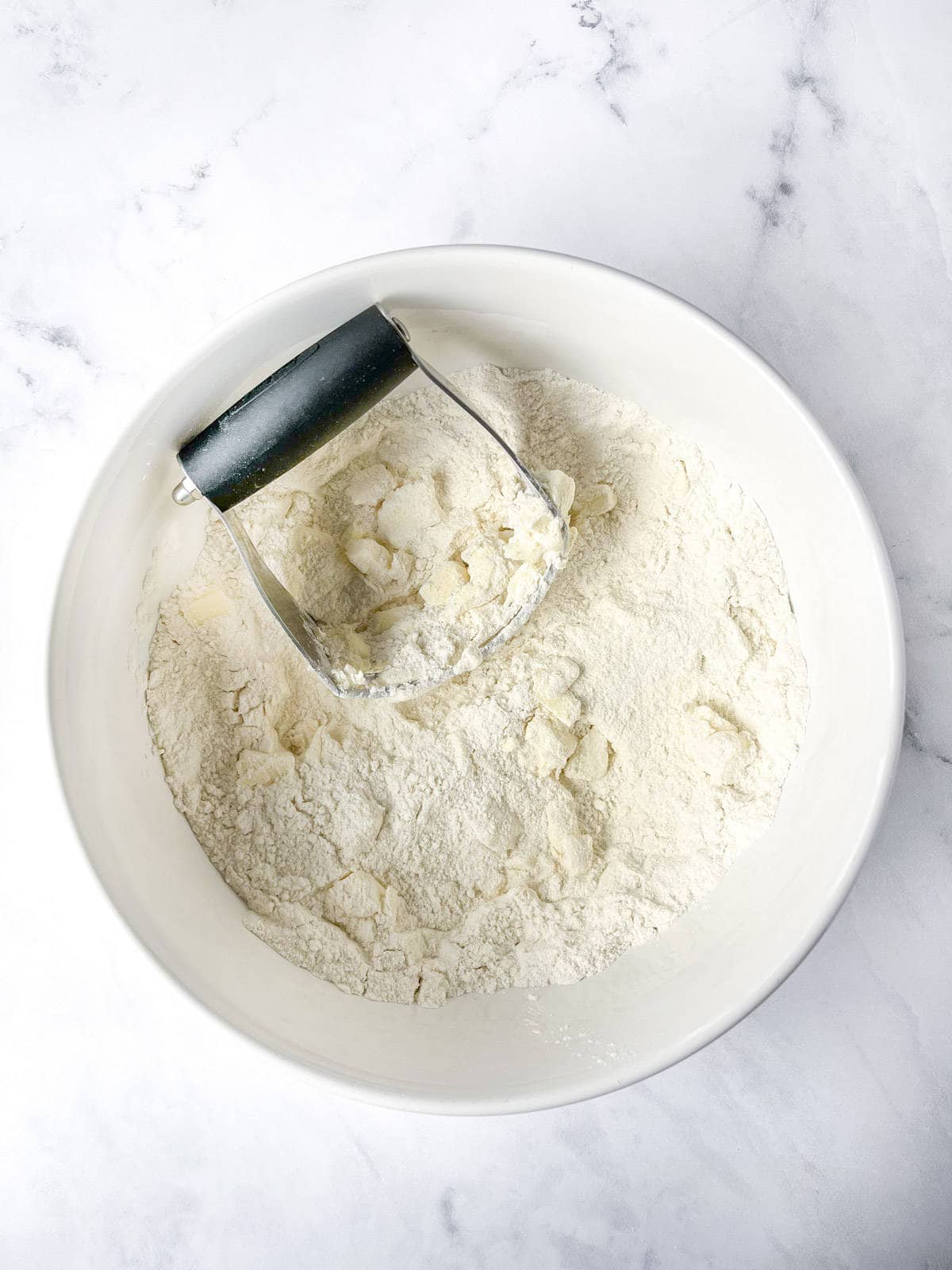
- Mix dry ingredients and butter: In a large mixing bowl combine the flour, granulated sugar, baking powder, and salt. Add in the cold, cubed butter and use your hands or a pastry cutter to cut in the butter until pea sized amounts of butter remain.

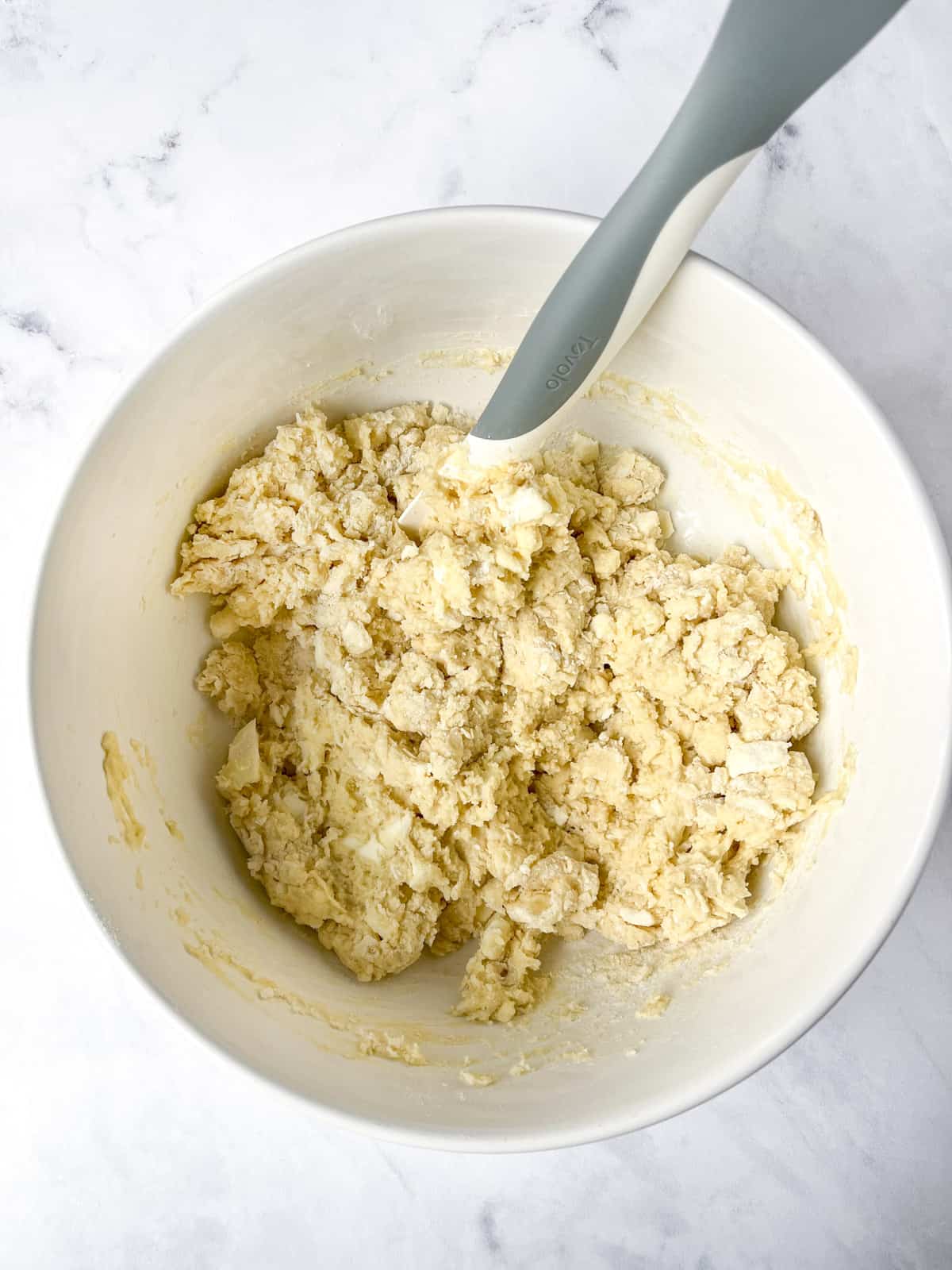
- Mix in wet ingredients: Create a well in the center of the flour mixture. Add the buttermilk, vanilla extract, and egg. Use a spatula to gently combine until the dough is thick and sticky. Gently stir in your mix-in if using – example 1 cup chocolate chips OR 1 cup fresh raspberries, broken into pieces and frozen OR 1 cup blueberries OR 1 cup strawberries, chopped, OR 1 Tbsp lemon zest plus 1 Tbsp lemon juice, freshly squeezed, OR 1 cup fresh or frozen cranberries, or dried cranberries, do not thaw frozen cranberries plus 1 Tbsp orange juice, freshly squeezed.
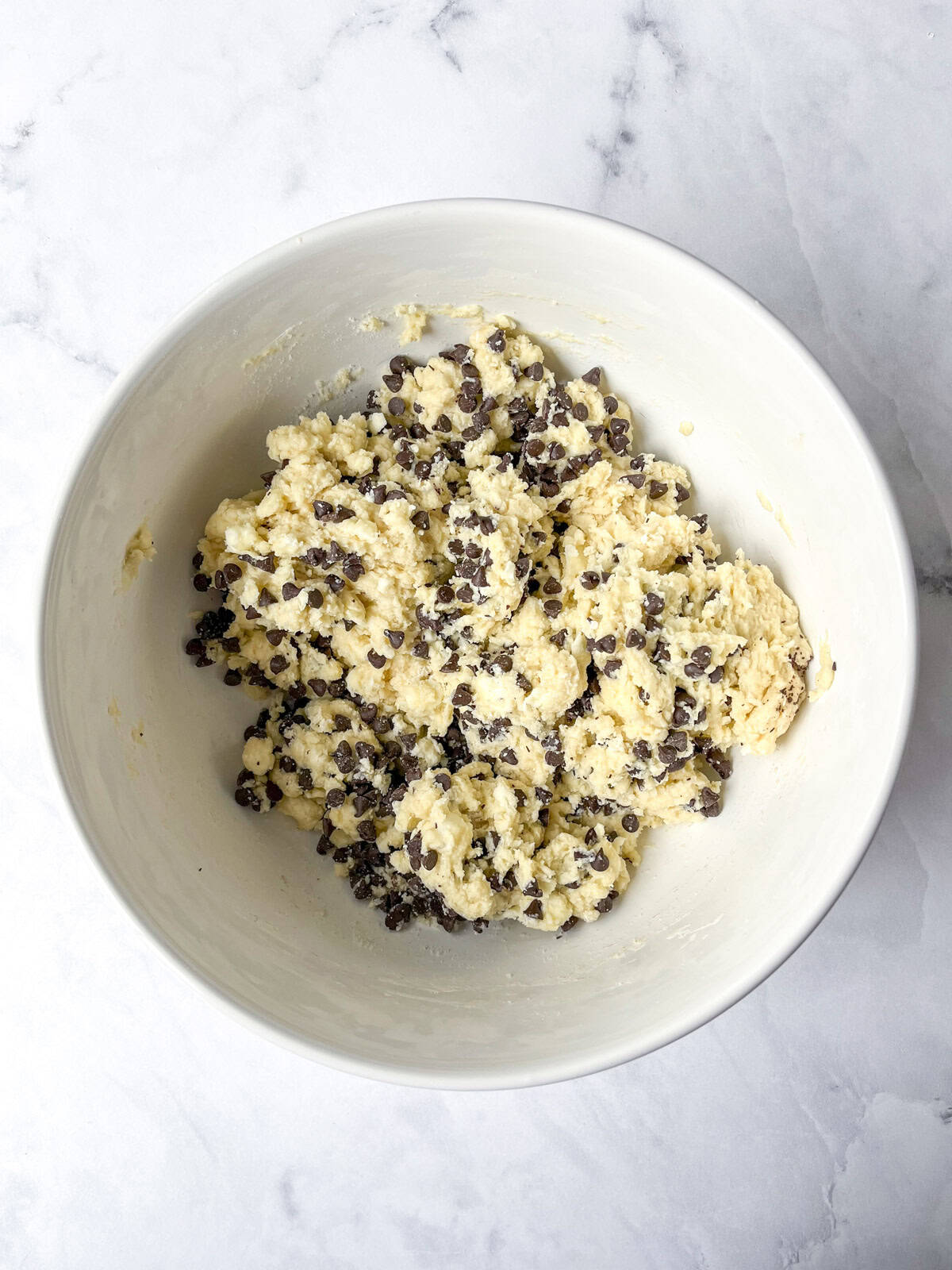
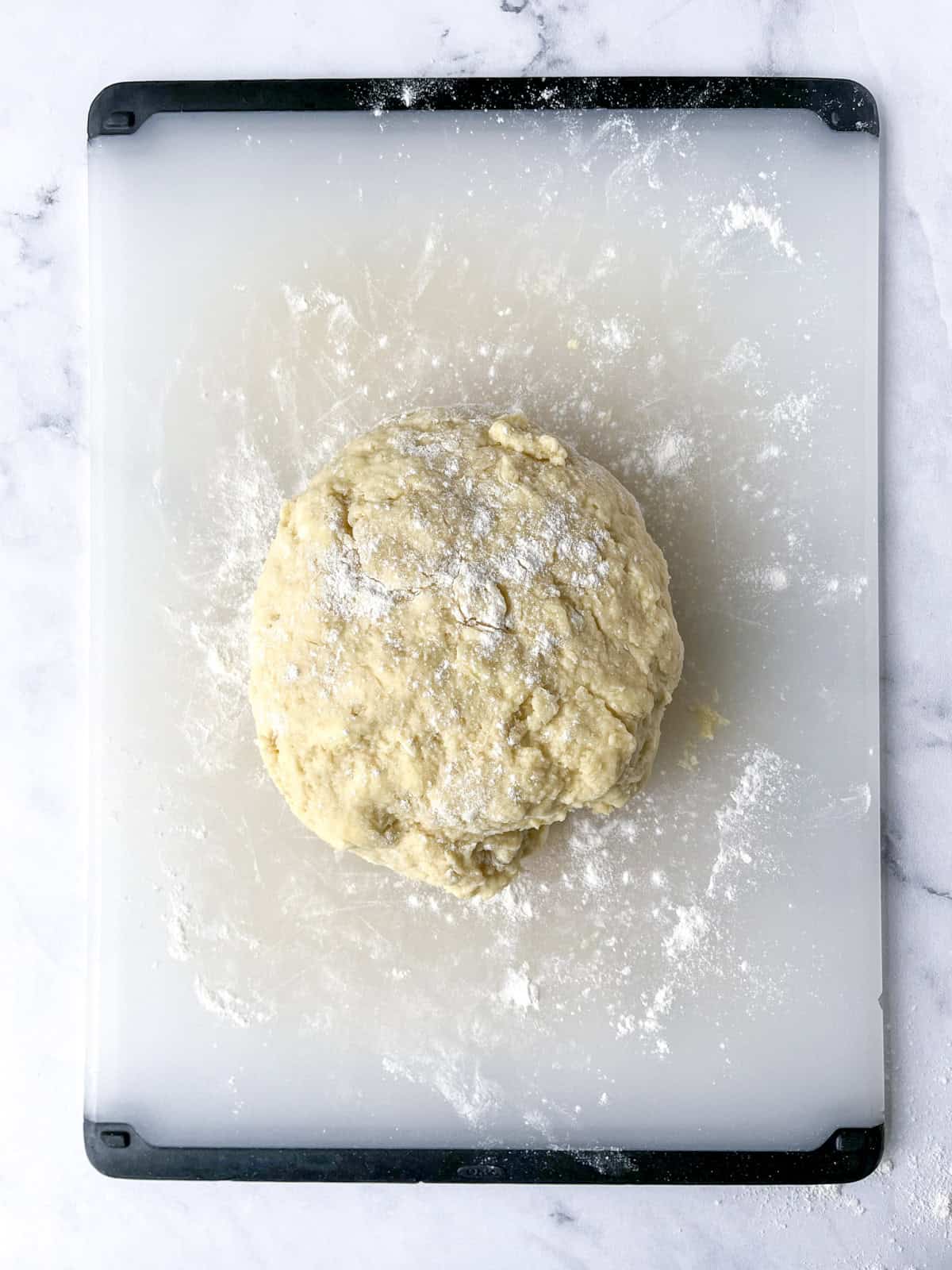
- Knead dough: On a silicone mat or kitchen counter, gently knead the dough, until all the flour is incorporated. Add 1-2 additional tablespoons of flour if the dough is too sticky.
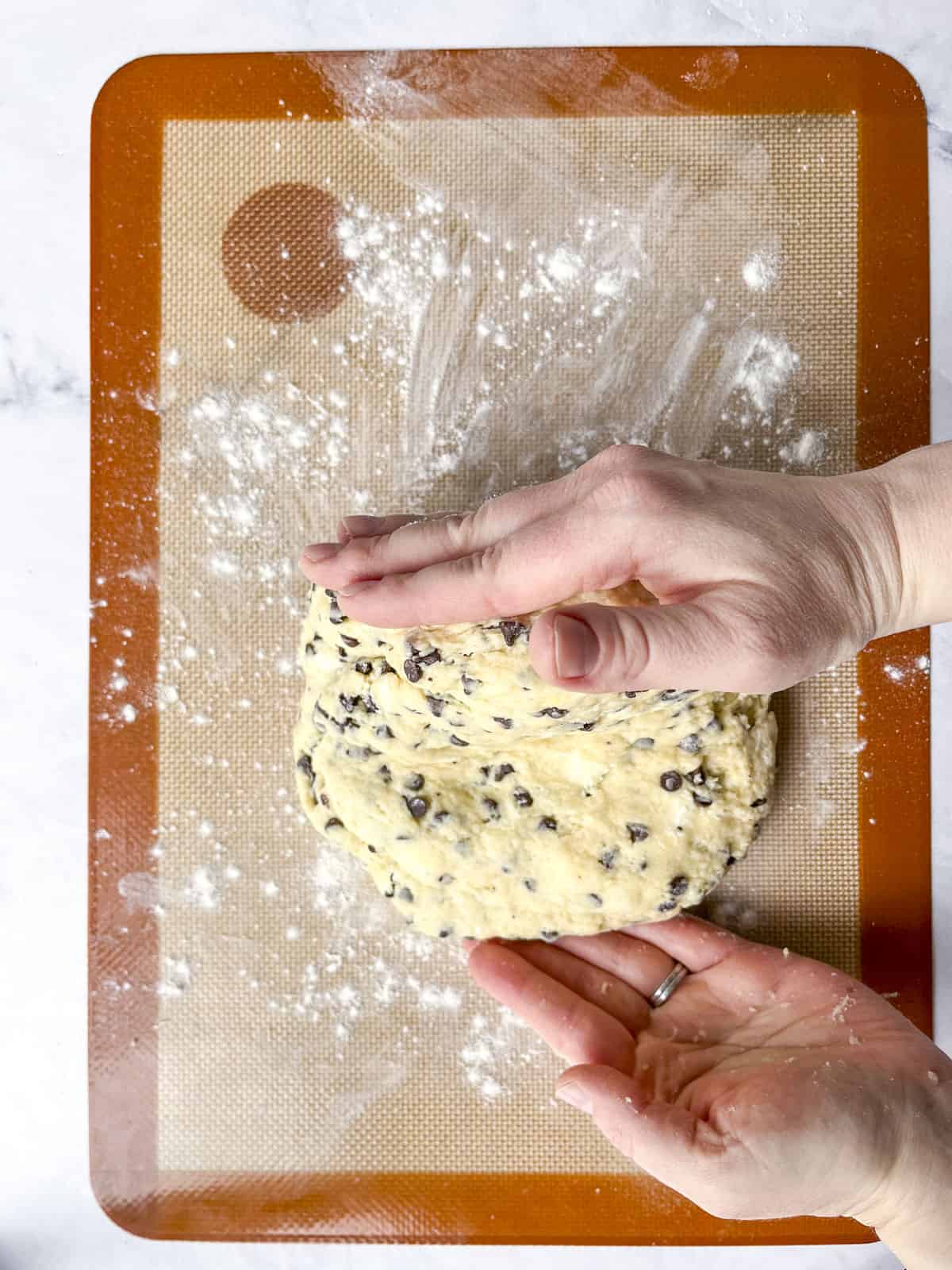
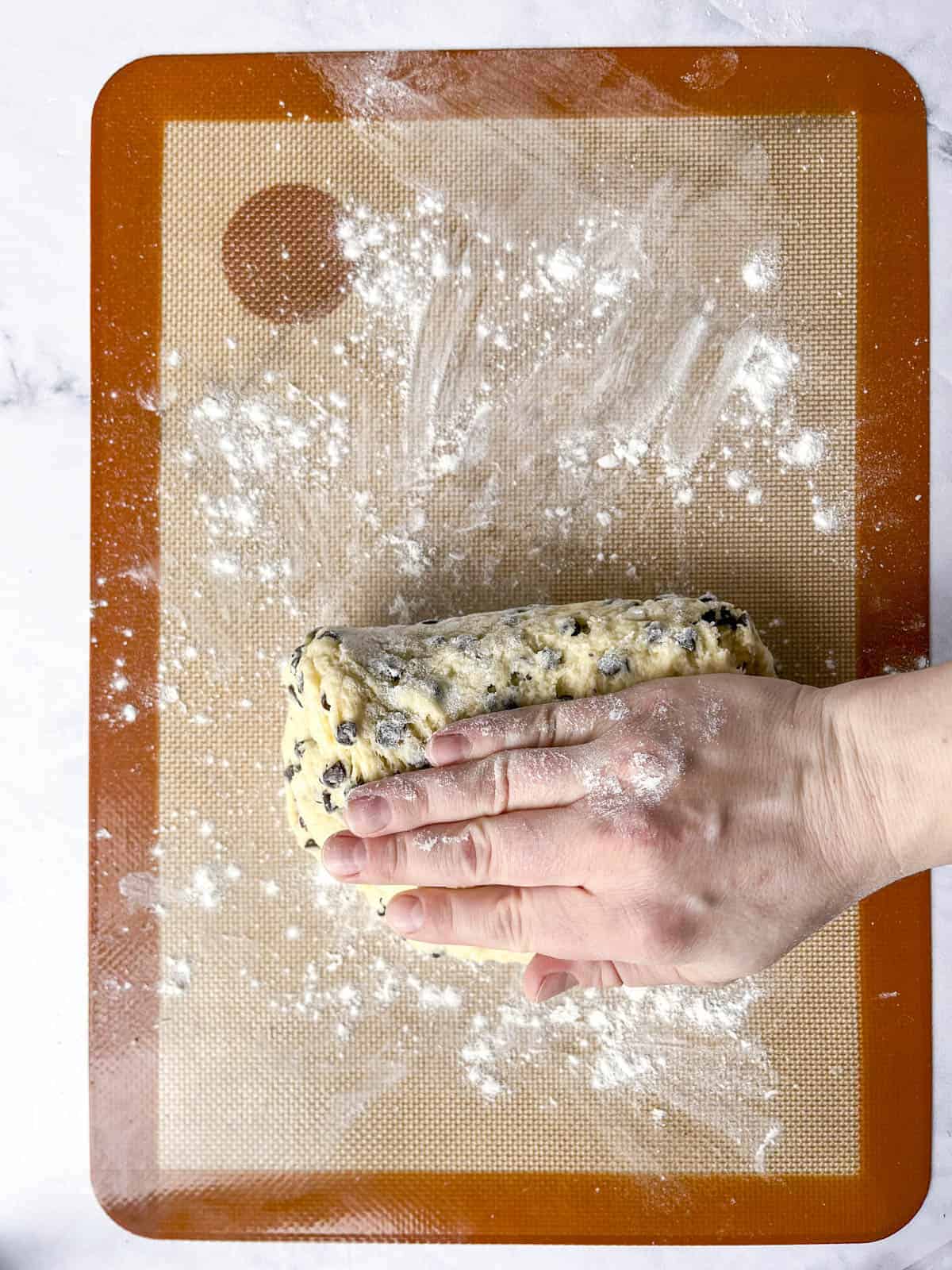
- Fold dough: Lamination (folding the dough to create flaky layers!) – Fold the dough in half, press it down slightly, then turn the dough 90 degrees and fold in half again. Repeat this folding and turning process 4-5 times.
- Chill dough: Shape the dough into a 8-10 inch disc that is about 1.5 to 2 inches tall. Refrigerate the scone in a disc for 5-10 minutes.
- Cut scones: Use a sharp knife or pizza cutter to cut the scones into 8 equal wedges.
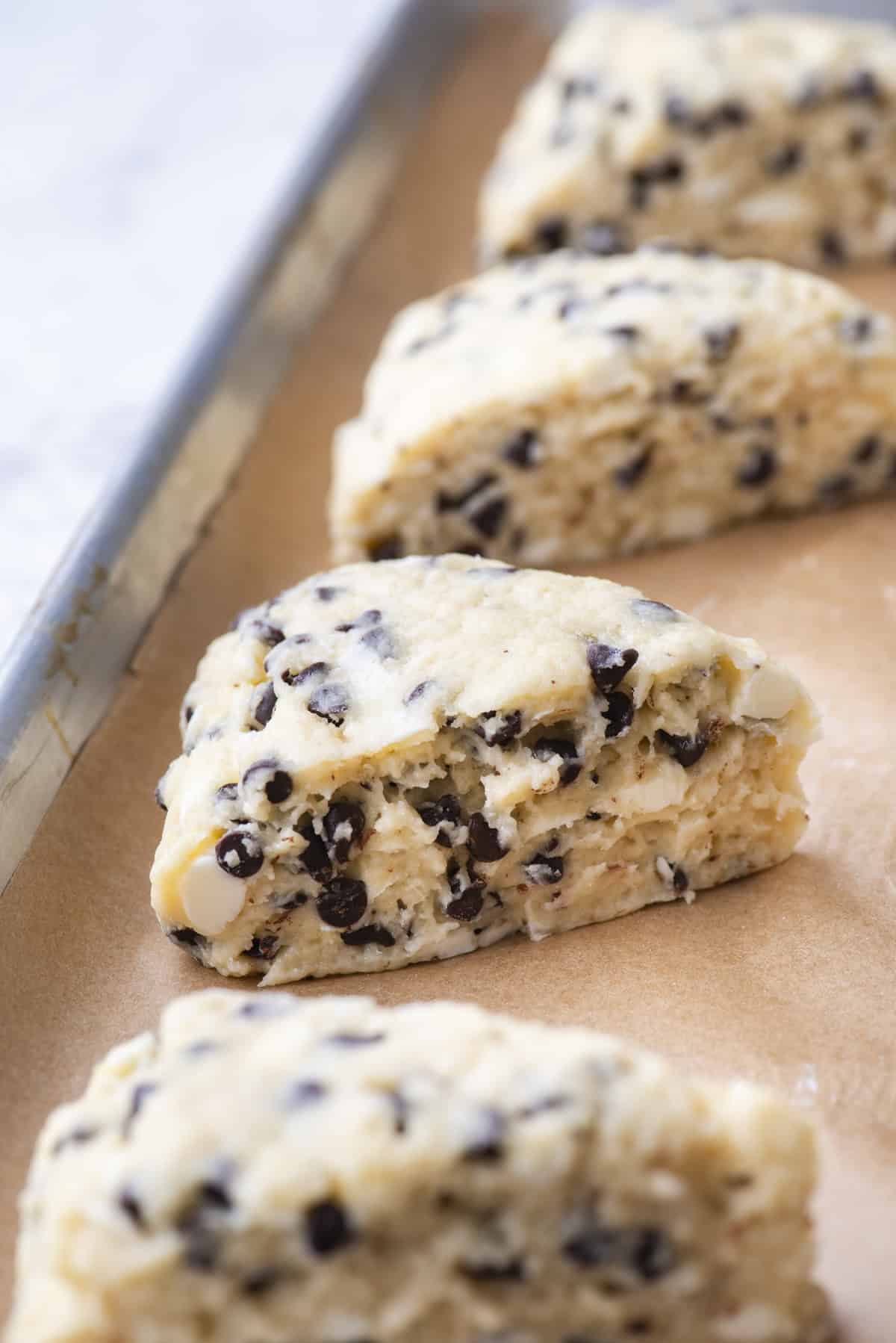
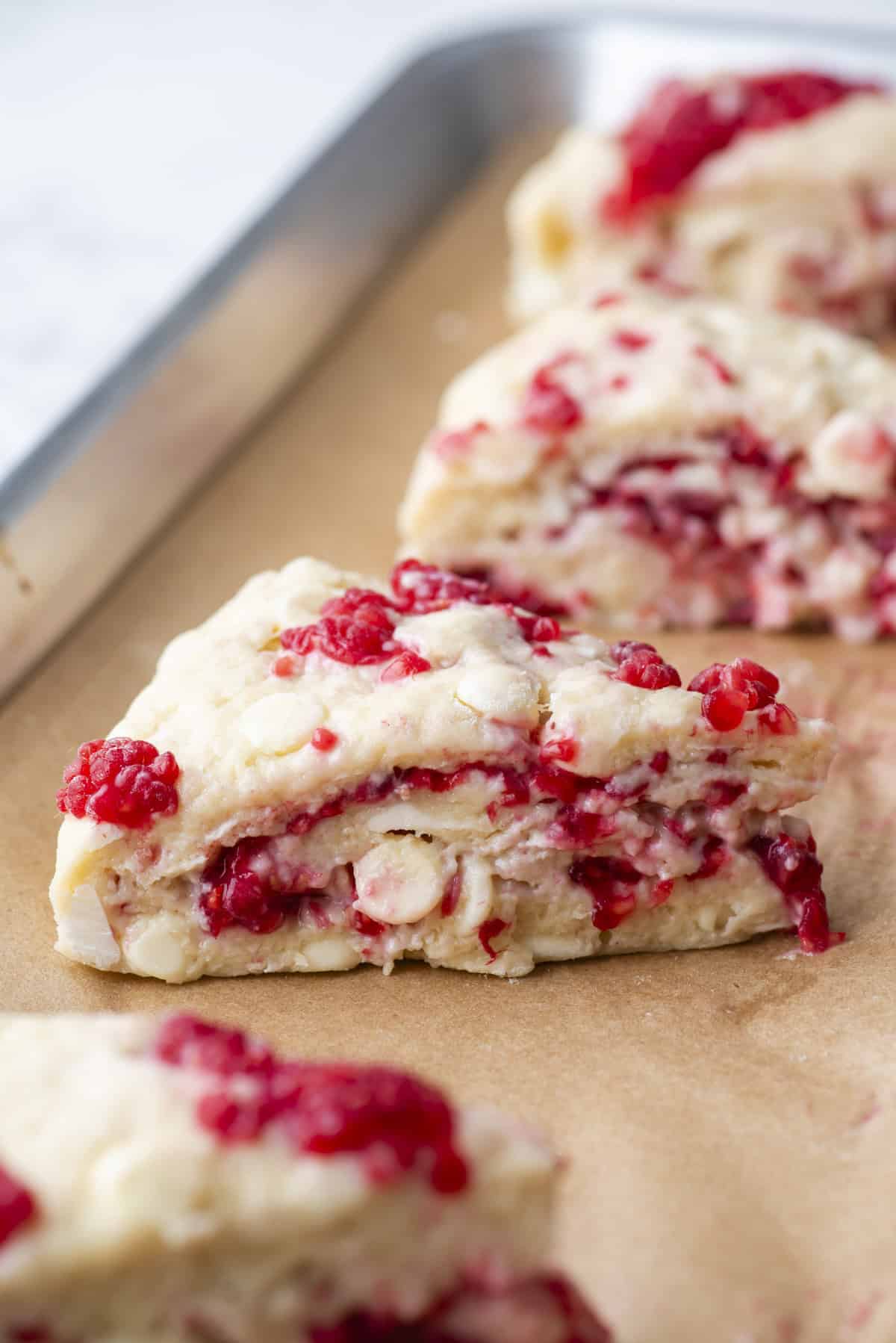
- Move to baking sheet: Place the scones 2-3 inches apart on a baking sheet that’s lined with a silicone mat or parchment paper.
- Freeze: Freeze the scones for 30 minutes. The last 5 minutes, preheat the oven to 400º F.
- Add egg wash: Brush the tops of the scones with egg wash (1 large egg + 1 Tbsp water), buttermilk or heavy cream. Add coarse sanding sugar if desired.
- Bake and cool: Bake for 20-26 minutes or until the scones are lightly golden brown. Allow the scones to cool.

How To Make Tall, Flaky Scones
Lamination, which is the process of folding the dough, helps to create tall, flaky scones!
Lamination works by sandwiching layers of butter between layers of dough. During baking, the butter melts and creates steam, which separates the layers of dough, resulting in a flaky texture.
The process of laminating scones is actually very easy! Once the dough is mixed together, fold the dough in half, press it down slightly, then turn the dough 90 degrees and fold in half again. Repeat this folding and turning process 4-5 times.
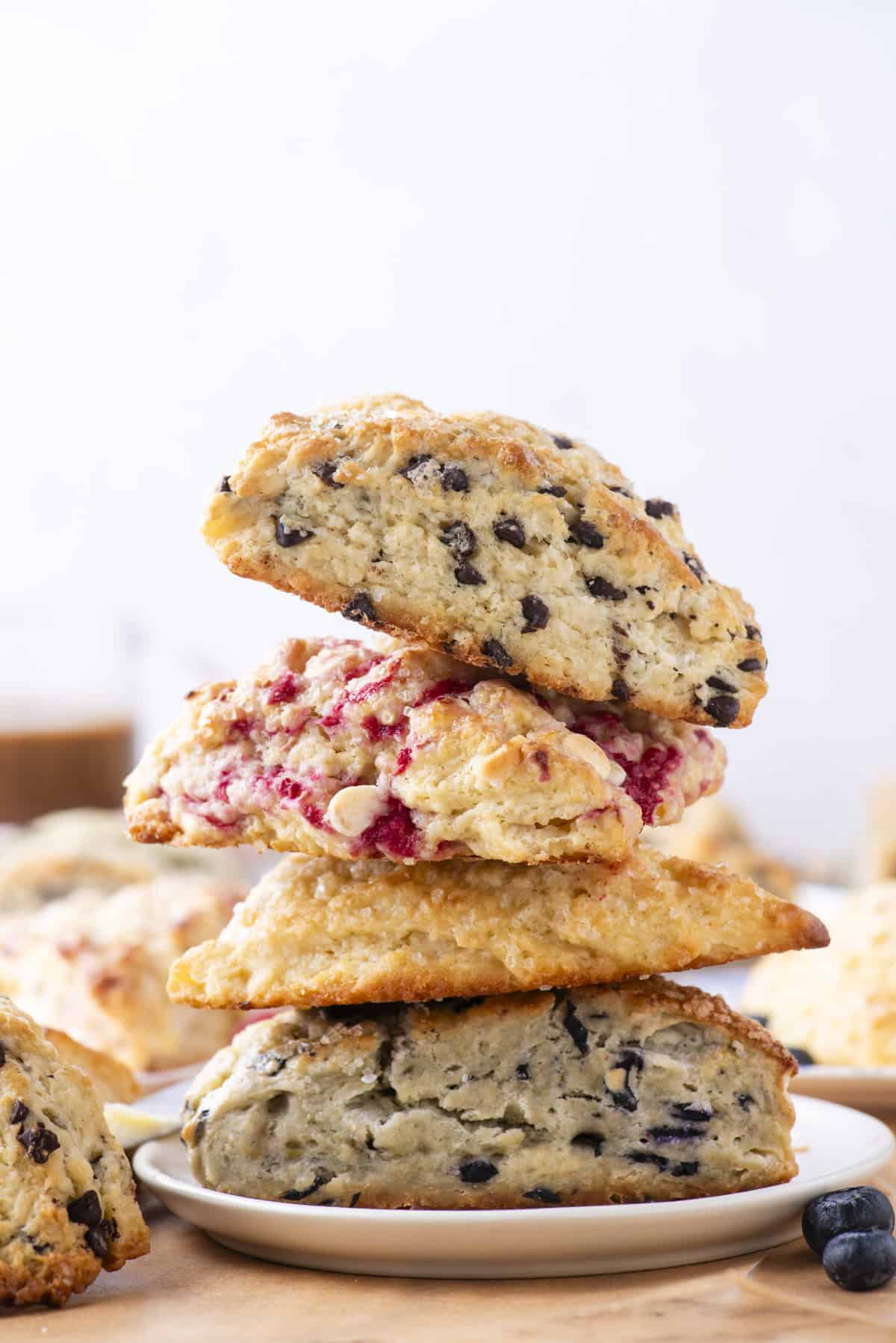
Tips for Making the Best Gluten Free Scones
To get the best outcome with your scones, keep these tips in mind:
- Start with cold, unsalted butter: Cold butter cut into small cubes is essential for flaky scones.
- Limit fresh fruit to 1 cup: Whether you’re using fresh or frozen fruit, stick to no more than 1 cup total. Adding more can make the dough too wet and cause it to spread too much in the oven.
- Adjust flour based on fruit type: If you’re making fruit-filled scones, you’ll need a bit more flour to balance out the extra moisture. Follow the notes in the recipe for adjusting flour depending on your add-in choice.
- Don’t skip freezing before baking: Chilling the scones before baking helps them keep their shape, minimizes spreading, and improves the texture. Freezing firms up the butter so that when it melts in the oven, it creates steam—giving you that perfectly flaky, tender scone.
How to Store a Gluten Free Scone
Let your scones cool fully before storing—sealing them while still warm can lead to unwanted moisture and sogginess. Once cooled, place them in an airtight container or zip-loc bag and keep them at room temperature in a cool, dry spot for up to 1–2 days. Skip the fridge, as it tends to dry them out.
For longer storage, pop the scones in the freezer for up to a month. When you’re ready to enjoy them, just let them thaw at room temperature.
More Scone Recipes
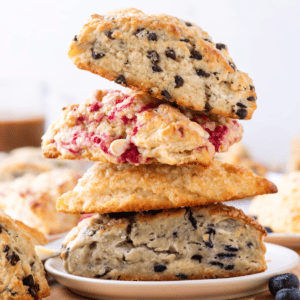
Tap stars to rate!
Gluten Free Scones Recipe
Ingredients
Plain Scones
- 2 ¼ cups (270g) gluten-free measure for measure flour, I used King Arthur’s Gluten-Free Measure for Measure Flour
- ½ cup (99g) granulated sugar
- 1 Tbsp baking powder
- ½ tsp salt
- ½ cup (113g) cold unsalted butter, cubed
- ½ cup (118ml) buttermilk
- 1 tsp vanilla extract
- 1 large egg
Flavors
Chocolate Chip Scones
- 1 cup (170g) chocolate chips, I used mini chocolate chips in the photos
Raspberry White Chocolate Chip Scones
- 1 cup (120g) fresh raspberries, broken into pieces and frozen
- 1 cup (170g) white chocolate chips
Blueberry Scones
- 1 cup (150g) blueberries
Strawberry Scones
- 1 cup (167g) strawberries, chopped
Lemon Scones
- 1 Tbsp lemon zest
- 1 Tbsp lemon juice, freshly squeezed
Cranberry Orange Scones
- 1 cup (99g) fresh or frozen cranberries, or dried cranberries, do not thaw frozen cranberries
- 1 Tbsp orange juice, freshly squeezed

Instructions
- If making plain or chocolate chip scones, use 2 ¼ cups gluten free flour (270g). If making raspberry scones add an additional ¾ cup gluten free flour (90g) for a total of 3 cups (360g). If making blueberry, strawberry, lemon, or cranberry orange scones add an additional ¼ cup gluten free flour (30g) for a total of 2 ½ cups (300g). The fresh fruit adds a lot of moisture so more flour is needed otherwise the dough will be very wet and not have enough structure when baking.
- In a large mixing bowl combine the flour, granulated sugar, baking powder, and salt. Add in the cold, cubed butter and use your hands or a pastry cutter to cut in the butter until pea sized amounts of butter remain.2 ¼ cups (270g) gluten-free measure for measure flour, ½ cup (99g) granulated sugar, 1 Tbsp baking powder, ½ tsp salt, ½ cup (113g) cold unsalted butter
- Create a well in the center of the flour mixture. Add the buttermilk, vanilla extract, and egg. Use a spatula to gently combine until the dough is thick and sticky.½ cup (118ml) buttermilk, 1 tsp vanilla extract, 1 large egg
- Gently stir in your mix-in if using – example 1 cup chocolate chips OR 1 cup fresh raspberries, broken into pieces and frozen OR 1 cup blueberries OR 1 cup strawberries, chopped, OR 1 Tbsp lemon zest plus 1 Tbsp lemon juice, freshly squeezed, OR 1 cup cranberries plus 1 Tbsp orange juice, freshly squeezed.
- On a silicone mat or kitchen counter, gently knead the dough, until all the flour is incorporated. Add 1-2 additional tablespoons of flour if the dough is too sticky.
- Lamination (folding the dough to create flaky layers!): Fold the dough in half, press it down slightly, then turn the dough 90 degrees and fold in half again. Repeat this folding and turning process 4-5 times.
- Shape the dough into a 8-10 inch disc that is about 1.5 to 2 inches tall. Refrigerate the scone in a disc for 5-10 minutes.
- Use a knife or pizza cutter to cut the scones into 8 equal wedges.
- Place the scones 2-3 inches apart on a baking sheet that’s lined with a silicone mat or parchment paper.
- Freeze the scones for 30 minutes. The last 5 minutes, preheat the oven to 400º F.
- Brush the tops of the scones with egg wash (1 large egg + 1 Tbsp water), buttermilk or heavy cream. Add coarse sanding sugar if desired.
- Bake for 20-26 minutes or until the scones are lightly golden. Allow the scones to cool.



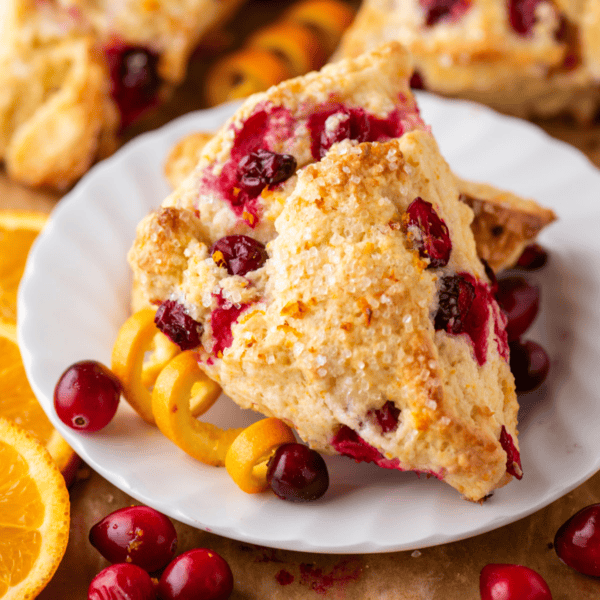







Thank you Beth for gf recipes!
How can I incorporate pumpkin purée into these gf scones?
I tried leaving this question but couldn’t finish because I took me out of the post!
Hi Jeannie! I would follow this pumpkin scone recipe and substitute the regular flour for gluten free flour. I recommend King Arthur’s Measure for Measure flour!
https://thefirstyearblog.com/pumpkin-scones/